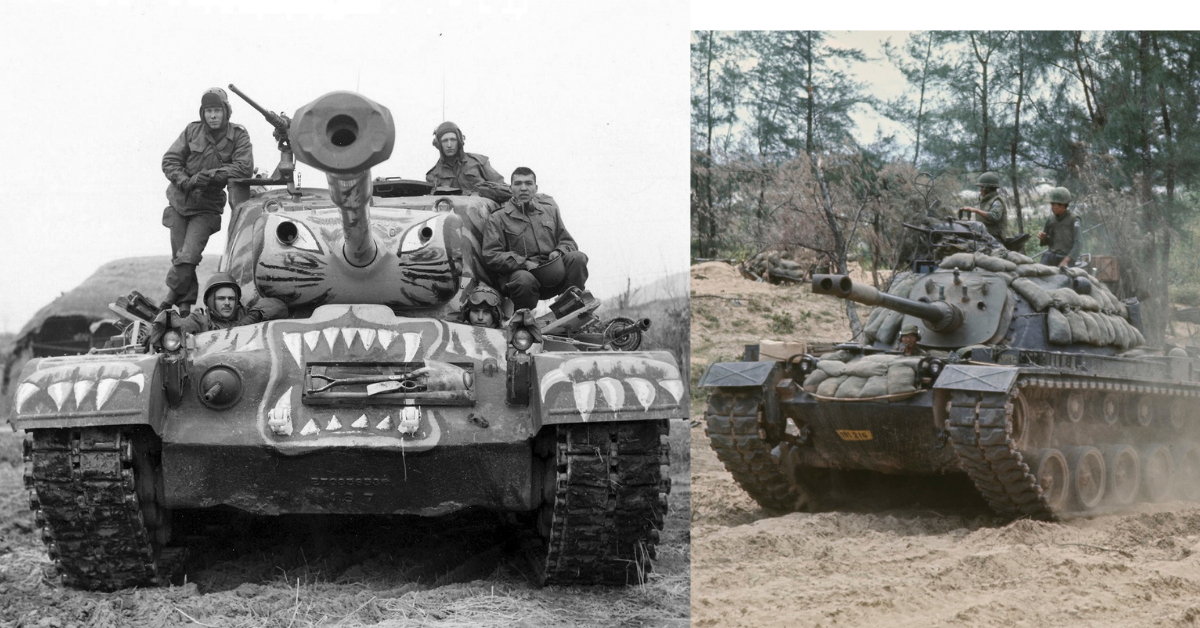Since WW2 US vehicles have been named after notable American historical figures, but this ongoing tradition of the US’ tank names was actually started by the British. Struggling with the complex and confusing designation system of their US-made tanks, the British began naming these vehicles after American generals or notables leaders.
For example, the M4 was named Sherman after General William Tecumseh Sherman, and the M3 was named Stuart after General James Ewell Brown “Jeb” Stuart. There are exceptions to this rule though, like the M22 Locust.
The US adopted this tradition and began naming their vehicles in a similar manner, which they continue to do today, with their current main battle tank (MBT) being named after General Creighton W. Abrams.
The Patton Family
Near the end of WW2, the US introduced the M26 Pershing, which at the time was designated a heavy tank. It was named after General of the Armies John Joseph Pershing. While the Pershing did not quite live up to expectations, it used a fundamentally solid chassis that had lots of potential to be improved upon.
The M46 Patton was based on the Pershing and was the first of a family of tanks named after the legendary General George S. Patton. After this came the M47 Patton, the M48 Patton and the M60.
M46 Patton
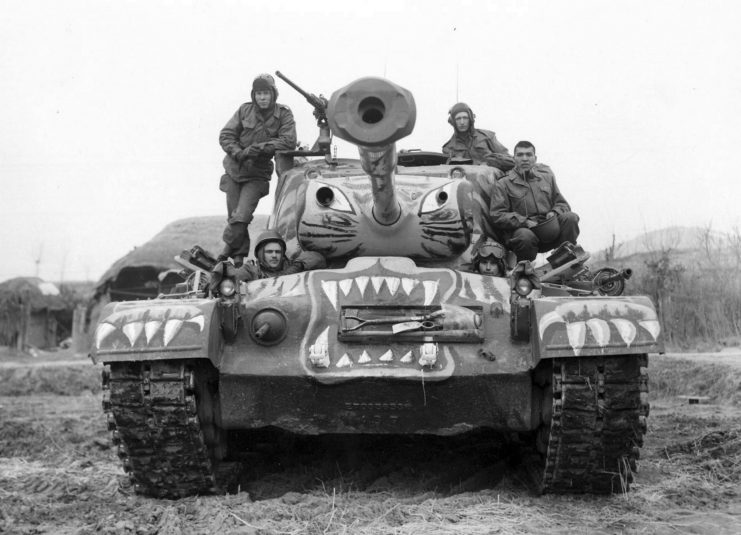
The M46 Patton was the US’ first new medium tank to see service after WWII, reaching units in 1949. It had a new name, but it was essentially an upgraded and modernized M26 Pershing. There were high hopes for the M26 Pershing upon its introduction, but apart from its acceptable armor and 90 mm gun, the tank turned out to be rather lackluster.
It used the same 500 hp Ford V8 engine as the M4A3 Sherman, but weighed over 10 tons more. The M46 brought a new 800 hp Continental AV-1790-5A V12 which significantly improved the tank’s mobility. The updated tank now had a bore evacuator and an additional idler wheel at the rear of the vehicle. Other changes include a different engine deck, exhausts, mudguards, and hatches. Its armor remained the same. The M46 greatly improved on the M26 and is considered by some to be the US’ first MBT.
The M46 fought in Korea but suffered from reliability issues and was a stop-gap design. 1,160 M46 Patton tanks of all variants were produced.
M47 Patton
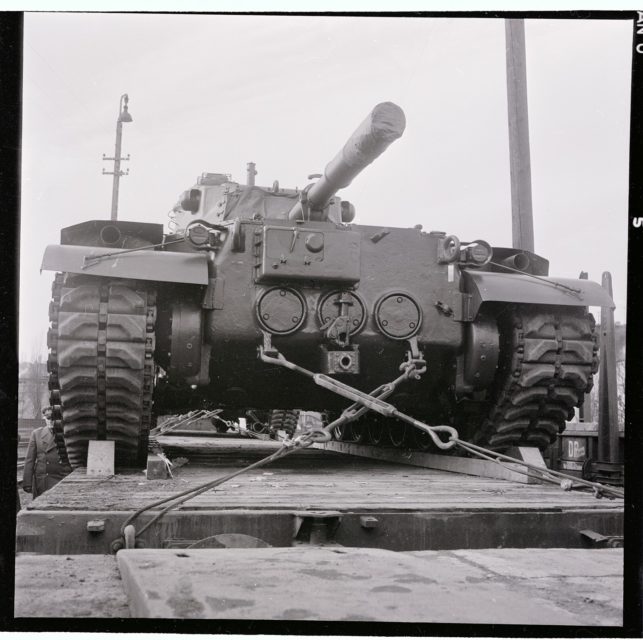
The M47 Patton was the successor to the M46 and was much more than a simple upgrade over its predecessor. Originally, the replacement for the M26 and M46 was meant to be the T42 medium tank, but issues with that tank and the ongoing Korean War meant a new vehicle was needed now. Instead of developing the T42, its needle nose turret was mated with the hull of the M46, forming yet another stopgap tank.
This solution meant production could start incredibly quickly. It entered service in 1951.
Aside from its more-angled 100 mm frontal armor, a larger turret ring, and a few other small changes, the hull remained mostly the same as the M46’s. The biggest upgrade was the turret. Sloped on nearly all sides, the turret was a smaller target and offered much better protection for the crew, while a stereoscopic range finder improved first-hit probability for its 90 mm gun.
The M47 Patton was the last US tank to have a bow-mounted machine gun.
Over 8,500 M47s were built, but they were quickly overshadowed by the arrival of the M48 Patton, a significant departure from all previous Patton tanks.
M48 Patton
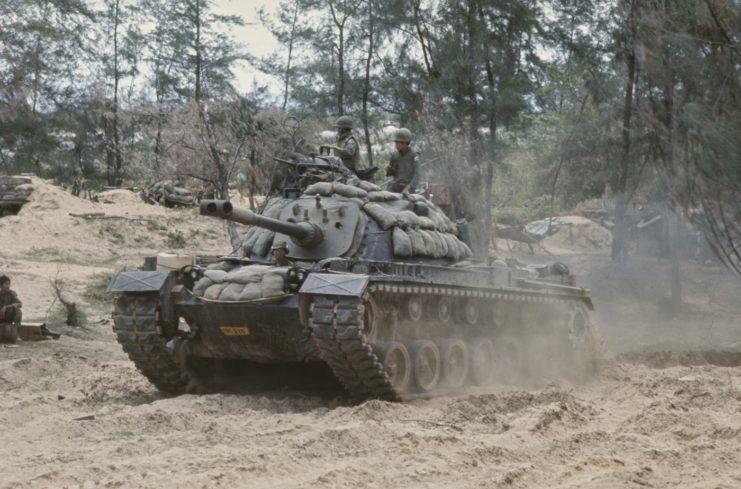
The third tank in the Patton family is the M48, and as mentioned, was a radically different design from all previous models. The earlier tanks had mostly been WWII-era designs upgraded to meet newer threats, but the M48 Patton was designed from the ground up as a new generation MBT.
The M48 had a boat-shaped hull, new suspension, a large hemispherical turret, wide tracks, and a centrally located driver in the ‘beak’ shaped hull front. The highly angled beak was 110 mm thick, while the turret front was 180 mm thick.
To begin with, the M48 used a similar 90 mm gun and engine to the M47, but over the course of its production, it received numerous upgrades, thanks to its adaptable design. The M48A5 is considered to be the pinnacle M48 version, carrying the M68 105 mm gun, a US license-built version of the excellent British L7 gun.
The design was so successful that the M48 has been able to be continuously upgraded, and is still in use today, despite entering service in 1952. 12,000 M48s were built in total.
M60 Patton
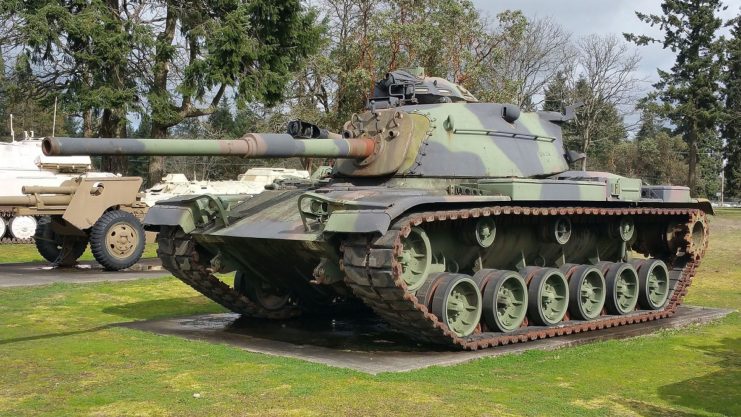
M60 Patton Tank at Fort Lewis Military Museum (Photo Credit: / Wikipedia)
This second-generation MBT was heavily based on the M48 before it, but was never officially named Patton. However, because of its similarities, the M60 is often classed as an unofficial member of the Patton tank family. 15,000 would be built between 1959 and 1983, and it would serve as the US’ main MBT during the Cold War.
The M60 was a development from the M48, improving on that tank in most aspects, especially in terms of firepower. The incentive for the M60 came from an event in 1956 when a T-54A was driven onto the grounds of the British embassy in Budapest. After the British inspected the vehicle they discovered that its frontal armor was immune to rounds from their own Centurion MBT and the US M48.
It was because of this that the British designed the Royal Ordnance L7 105 mm gun; one of the finest tank guns ever made. The M60 would use this gun in an M48 style turret. In 1963 the M60A1 arrived, which featured the needlenose turret the M60 is known for.
Its hull layout was similar to the M48, but the M60 replaced the ‘beak’ with more conventional hull armor. Its upper glacis plate was just 93 mm thick, but because it was extremely well sloped it offered protection equal to 225 mm of armor.
More From Us: Lloyd Fredendall: One of the Most Unsuccessful American Generals of WWII
Like the M48 Patton, the M60 was highly adaptable and saw great export success.
The arrival of the M1 Abrams meant the days of the M60 in US service were numbered, but it remains in service with other nations in large numbers today.
